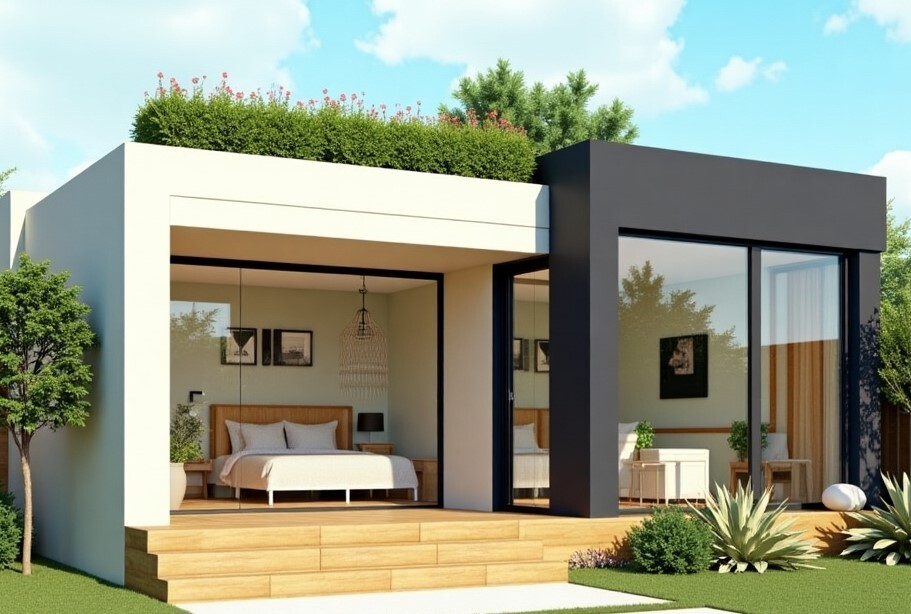
Introduction to ADUs in California
Accessory Dwelling Units (ADUs), also known as granny flats or in-law units, are increasingly popular among homeowners needing extra space, rental income, or housing for relatives. These units can be detached, attached, or converted from existing spaces like garages. In California, new legislation has made it easier to get permits for ADUs, encouraging more homeowners to build them. ADUs help address the housing shortage while supporting more affordable and flexible living options. They also promote sustainable urban development.
Attached vs. Detached ADUs
Attached ADUs
An attached ADU shares at least one wall with the primary residence. These units are often created by converting existing spaces such as garages, basements, or portions of the main house.
Advantages
- Cost-Effective: Utilizing existing structures can reduce construction costs.
- Shorter Permitting Process: Attached units may benefit from a more straightforward permitting process.
- Efficient Use of Space: Maximizes the use of existing property.
Considerations
- Zoning Restrictions: Local zoning laws may impose limitations on the size and placement of attached ADUs.
- Privacy Concerns: Sharing walls with the main residence may lead to privacy issues.
- Structural Modifications: Converting existing spaces may require significant structural changes.
Detached ADUs
A detached ADU is a separate, standalone structure located on the same property as the primary residence. These units offer more flexibility in design and placement.
Advantages
- Privacy: Provides separate living space, enhancing privacy for both occupants.
- Design Flexibility: Allows for customized designs and layouts.
- Potential Rental Income: Can serve as a rental unit, providing additional income.
Considerations
- Higher Costs: Construction of a new structure can be more expensive.
- Longer Permitting Process: Detached units may face a more lengthy permitting process.
- Space Requirements: Requires sufficient land area for construction.
Permitting Process for ADUs in California
The permitting process for ADUs in California is governed by state laws designed to facilitate the development of these units. However, local municipalities may have additional requirements.
State Requirements
- Ministerial Approval: ADU applications must be reviewed ministerially, meaning they are subject to objective standards without discretionary review.
- No Owner-Occupancy Requirement: As of January 1, 2025, there is no requirement for the property owner to live on-site.
- Setback Regulations: Detached ADUs typically require a 4-foot setback from rear and side property lines.
- Parking Requirements: Parking is not required for ADUs located within half a mile of public transportation.
Local Requirements
Local jurisdictions may impose additional requirements, such as:
- Design Standards: Architectural guidelines to ensure the ADU complements the primary residence.
- Utility Connections: Requirements for water, sewer, and electricity connections.
- Impact Fees: Fees to mitigate the impact of additional units on local infrastructure.
Role of Exotic Remodel in ADU Projects
Exotic Remodel is a California-based company specializing in high-end home renovations, including the ADU design and construction. With a focus on quality craftsmanship and attention to detail, Exotic Remodel assists homeowners in navigating the complexities of ADU development.
Services Offered:
- Design Consultation: Collaborating with clients to create customized ADU designs that meet their needs and preferences.
- Permitting Assistance: Guiding clients through the permitting process, ensuring compliance with state and local regulations.
- Construction Management: Overseeing the construction process to ensure timely and quality completion.
- Financing Guidance: Providing information on financing options available for ADU projects.

